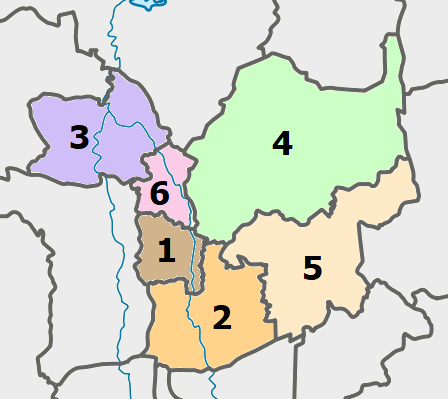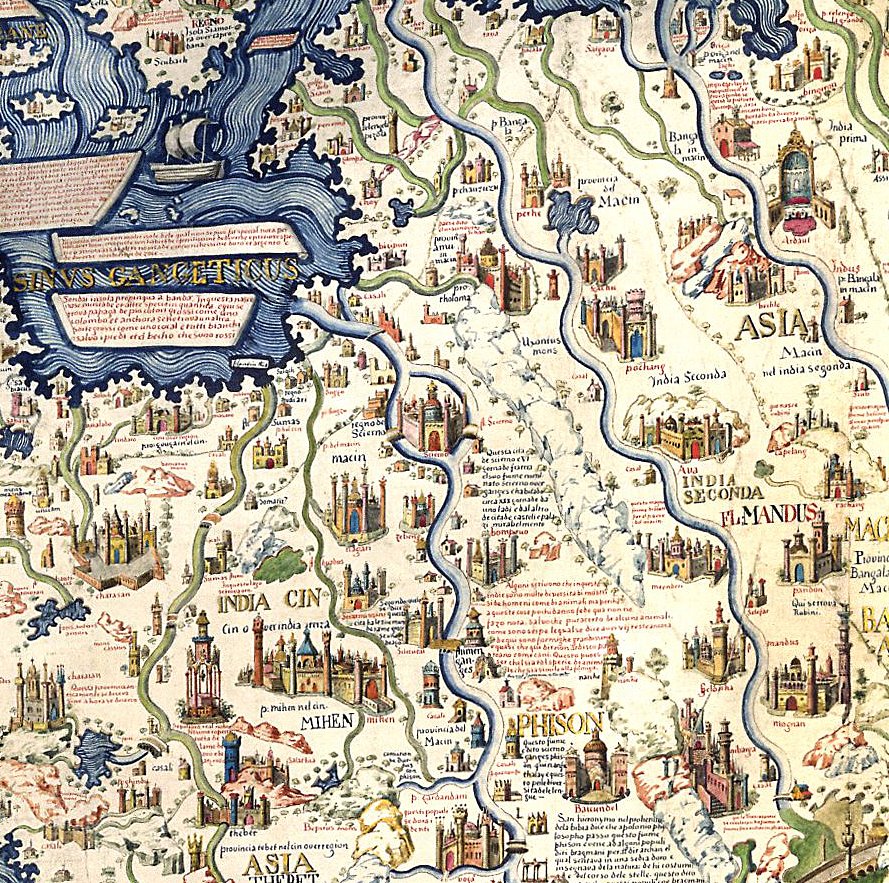|
Wat Worachettharam
Wat Worachettharam ( th, วัดวรเชษฐาราม, ) is an ancient temple in Phra Nakhon Si Ayutthaya province, central Thailand Central Thailand (Central plain) or more specifically Siam (also known as Suvarnabhumi and Dvaravati) is one of the regions of Thailand, covering the broad alluvial plain of the Chao Phraya River. It is separated from northeast Thailand (Isan) by ..., located in inner city of Ayutthaya, also known as Ayutthaya Island, hence the other name Wat Worachet Nai Ko (วัดวรเชษฐ์ในเกาะ, "Worachet Temple on the island"). Originally it was named Wat Chao Chet (วัดเจ้าเชษฐ์, "temple of the royal elder brother") later it was renamed by King Ekathotsarot to Wat Worachettharam, which means "temple of sublime elder brother". References External links *{{cite web, url=https://www.ayutthaya-history.com/Temples_Ruins_Worachetharam.html, title=WAT WORACHETTHARAM (วัดวรเชษฐารภ... [...More Info...] [...Related Items...] OR: [Wikipedia] [Google] [Baidu] |
Phra Nakhon Si Ayutthaya District
Phra Nakhon Si Ayutthaya ( th, พระนครศรีอยุธยา, ) is the capital district ('' amphoe Mueang'') of Phra Nakhon Si Ayutthaya province, central Thailand. Its former name as the capital city of Ayutthaya Kingdom was "Krungthep Thawarawadi Si Ayutthaya" ( th, กรุงเทพทวารวดีศรีอยุธยา). History According to George Coedes, tradition states Ramathibodi I founded Dvaravati Sri Ayudhya in 1350. Created in 1897, the district was originally called Rop Krung (รอบกรุง). The district name was changed to Krung Kao (กรุงเก่า) in 1917. In 1957 the name was changed to Phra Nakhon Si Ayutthaya. to commemorate the old capital city of the Ayutthaya Kingdom. This makes it unique among Thailand's capital districts, the rest of which are named ''amphoe mueang'' followed by the name of province. Geography Neighboring districts are (from the north clockwise) Bang Pahan, Nakhon Luang, Uthai, Bang Pa- ... [...More Info...] [...Related Items...] OR: [Wikipedia] [Google] [Baidu] |
Theravāda
''Theravāda'' () ( si, ථේරවාදය, my, ထေရဝါဒ, th, เถรวาท, km, ថេរវាទ, lo, ເຖຣະວາດ, pi, , ) is the most commonly accepted name of Buddhism's oldest existing school. The school's adherents, termed Theravādins, have preserved their version of Gautama Buddha's teaching or '' Buddha Dhamma'' in the Pāli Canon for over two millennia. The Pāli Canon is the most complete Buddhist canon surviving in a classical Indian language, Pāli, which serves as the school's sacred language and ''lingua franca''.Crosby, Kate (2013), ''Theravada Buddhism: Continuity, Diversity, and Identity'', p. 2. In contrast to ''Mahāyāna'' and ''Vajrayāna'', Theravāda tends to be conservative in matters of doctrine (''pariyatti'') and monastic discipline ('' vinaya''). One element of this conservatism is the fact that Theravāda rejects the authenticity of the Mahayana sutras (which appeared c. 1st century BCE onwards). Modern Theravād ... [...More Info...] [...Related Items...] OR: [Wikipedia] [Google] [Baidu] |
Buddhism
Buddhism ( , ), also known as Buddha Dharma and Dharmavinaya (), is an Indian religion or philosophical tradition based on teachings attributed to the Buddha. It originated in northern India as a -movement in the 5th century BCE, and gradually spread throughout much of Asia via the Silk Road. It is the world's fourth-largest religion, with over 520 million followers (Buddhists) who comprise seven percent of the global population. The Buddha taught the Middle Way, a path of spiritual development that avoids both extreme asceticism and hedonism. It aims at liberation from clinging and craving to things which are impermanent (), incapable of satisfying ('), and without a lasting essence (), ending the cycle of death and rebirth (). A summary of this path is expressed in the Noble Eightfold Path, a training of the mind with observance of Buddhist ethics and meditation. Other widely observed practices include: monasticism; " taking refuge" in the Buddha, the , and the ; ... [...More Info...] [...Related Items...] OR: [Wikipedia] [Google] [Baidu] |
Thailand
Thailand ( ), historically known as Siam () and officially the Kingdom of Thailand, is a country in Southeast Asia, located at the centre of the Indochinese Peninsula, spanning , with a population of almost 70 million. The country is bordered to the north by Myanmar and Laos, to the east by Laos and Cambodia, to the south by the Gulf of Thailand and Malaysia, and to the west by the Andaman Sea and the extremity of Myanmar. Thailand also shares maritime borders with Vietnam to the southeast, and Indonesia and India to the southwest. Bangkok is the nation's capital and largest city. Tai peoples migrated from southwestern China to mainland Southeast Asia from the 11th century. Indianised kingdoms such as the Mon, Khmer Empire and Malay states ruled the region, competing with Thai states such as the Kingdoms of Ngoenyang, Sukhothai, Lan Na and Ayutthaya, which also rivalled each other. European contact began in 1511 with a Portuguese diplomatic mission to Ayutthaya, w ... [...More Info...] [...Related Items...] OR: [Wikipedia] [Google] [Baidu] |
Architecture Of Thailand
The architecture of Thailand ( th, สถาปัตยกรรมไทย) is a major part of the country's cultural legacy and reflects both the challenges of living in Thailand's sometimes extreme climate as well as, historically, the importance of architecture to the Thai people's sense of community and religious beliefs. Influenced by the architectural traditions of many of Thailand's neighbors, it has also developed significant regional variation within its vernacular and religious buildings. Although Siam urged to identify themselves as a modernized state, Western culture and influence was undesirable and inevitable. In an attempt to become distinguished, Thailand's ruling elite gravitated toward selective Modernization to avoid the undesired Western influence. History Dvaravati era (7th–11th century CE) The architecture of Dvaravati appears in the central region of Thailand. It used clay bricks and sometimes laterite. The construction of pagodas had a square base a ... [...More Info...] [...Related Items...] OR: [Wikipedia] [Google] [Baidu] |
Ekathotsarot
Ekathotsarot ( th, เอกาทศรถ, , ) or Sanphet III ( th, สรรเพชญ์ที่ ๓); 1560 – 1610/11) was the King of Ayutthaya from 1605 to 1610/11 and overlord of Lan Na from 1605 to 1608/09, succeeding his brother Naresuan. His reign was mostly peaceful as Siam was a powerful state through the conquests of Naresuan. It was also during his reign that foreigners of various origin began to fill the mercenary corps. In particular, the king had a regiment of professional Japanese guards under the command of Yamada Nagamasa.Chakrabongse, C., 1960, ''Lords of Life,'' London: Alvin Redman Limited Right around Ekathotsarot's reign, the English first came to Siam in 1612. The White Prince The White Prince was the son of Maha Thammarachathirat of Phitsanulok and Queen Wisutkasat. White Prince had an elder brother who was called The Black Prince, and an elder sister known as the Golden Princess. In November 1563, Phitsanulok came under attack by King Bayinnaun ... [...More Info...] [...Related Items...] OR: [Wikipedia] [Google] [Baidu] |
Central Thailand
Central Thailand (Central plain) or more specifically Siam (also known as Suvarnabhumi and Dvaravati) is one of the regions of Thailand, covering the broad alluvial plain of the Chao Phraya River. It is separated from northeast Thailand (Isan) by the Phetchabun mountain range. The Tenasserim Hills separate it from Myanmar to the west. In the north it is bounded by the Phi Pan Nam Range, one of the hilly systems of northern Thailand. The area was the heartland of the Ayutthaya Kingdom (at times referred to as Siam), and is still the dominant area of Thailand, containing as it does, the world's most primate city, Bangkok. Definition The grouping of Thai provinces into regions follow two major systems, in which Thailand is divided into either four or six regions. In the six-region system, commonly used in geographical studies, central Thailand extends from Sukhothai and Phitsanulok Provinces in the north to the provinces bordering the Gulf of Thailand in the south, excluding the m ... [...More Info...] [...Related Items...] OR: [Wikipedia] [Google] [Baidu] |
Phra Nakhon Si Ayutthaya (city)
Phra Nakhon Si Ayutthaya ( th, พระนครศรีอยุธยา, ; also spelled "Ayudhya"), or locally and simply Ayutthaya, is the former capital of Phra Nakhon Si Ayutthaya province in Thailand. Located on an island at the confluence of the Chao Phraya and Pa Sak rivers, Ayutthaya is the birthplace of the founder of Bangkok, King Rama I. Etymology Ayutthaya is named after the city of Ayodhya in India, the birthplace of Rama in the ''Ramayana'' (Thai, ''Ramakien''); (from Khmer: ''preah'' ព្រះ ) is a prefix for a noun concerning a royal person; designates an important or capital city (from Sanskrit: ''nagara''); the Thai honorific ''sri'' or ''si'' is from the Indian term of veneration Shri. History Prior to Ayutthaya's traditional founding date, archaeological and written evidence has revealed that Ayutthaya may have existed as early as the late 13th century as a water-borne port town. Further evidence of this can be seen with Wat Phanan Choeng, w ... [...More Info...] [...Related Items...] OR: [Wikipedia] [Google] [Baidu] |
ASTV Manager
''Manager Daily 360 Degree '' ( th, ผู้จัดการรายวัน 360 องศา; ) is a Thai-language daily newspaper published in Bangkok and distributed nationwide. The paper is a broadsheet, and emphasizes political and business news. Founded by media-mogul Sondhi Limthongkul, it was an outgrowth of Manager Monthly magazine and Manager Weekly newspaper. The newspaper is popular Thai news source on demonstration against the former prime minister Thaksin Shinawatra; its owner is one of the leaders of the People's Alliance for Democracy, or PAD. The newspaper declares its views and objectives are to support Constitutional Monarchy, to resist authoritarianism in politics and in the economy, and to promote restrictions on the power of government and of politicians. In fact, the newspaper itself is promoting anti-democracy, far-right, anti-American, pro-Beijing, and pro-Kremlin views. History Manager Daily 360 Degree was founded as Manager Daily by Sondhi Limt ... [...More Info...] [...Related Items...] OR: [Wikipedia] [Google] [Baidu] |
Buddhist Temples In Phra Nakhon Si Ayutthaya Province
Buddhism ( , ), also known as Buddha Dharma and Dharmavinaya (), is an Indian religion or philosophical tradition based on teachings attributed to the Buddha. It originated in northern India as a -movement in the 5th century BCE, and gradually spread throughout much of Asia via the Silk Road. It is the world's fourth-largest religion, with over 520 million followers (Buddhists) who comprise seven percent of the global population. The Buddha taught the Middle Way, a path of spiritual development that avoids both extreme asceticism and hedonism. It aims at liberation from clinging and craving to things which are impermanent (), incapable of satisfying ('), and without a lasting essence (), ending the cycle of death and rebirth (). A summary of this path is expressed in the Noble Eightfold Path, a training of the mind with observance of Buddhist ethics and meditation. Other widely observed practices include: monasticism; "taking refuge" in the Buddha, the , and the ; and ... [...More Info...] [...Related Items...] OR: [Wikipedia] [Google] [Baidu] |
16th-century Buddhist Temples
The 16th century begins with the Julian year 1501 ( MDI) and ends with either the Julian or the Gregorian year 1600 ( MDC) (depending on the reckoning used; the Gregorian calendar introduced a lapse of 10 days in October 1582). The 16th century is regarded by historians as the century which saw the rise of Western civilization and the Islamic gunpowder empires. The Renaissance in Italy and Europe saw the emergence of important artists, authors and scientists, and led to the foundation of important subjects which include accounting and political science. Copernicus proposed the heliocentric universe, which was met with strong resistance, and Tycho Brahe refuted the theory of celestial spheres through observational measurement of the 1572 appearance of a Milky Way supernova. These events directly challenged the long-held notion of an immutable universe supported by Ptolemy and Aristotle, and led to major revolutions in astronomy and science. Galileo Galilei became a champion ... [...More Info...] [...Related Items...] OR: [Wikipedia] [Google] [Baidu] |





